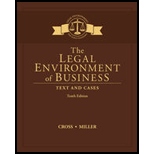
Case s ummary : The company I sold computer security software by the name of “scareware”. Ads by I redirected the consumers to a site and showed them that their computer was infected with dangerous files. In reality, no scans were conducted. K, the co-founder of I, was aware of the consumer complaints against their ads. An individual would be liable under FTC’s prohibition of deceptive practices if he participated in the deceptive advertisement and had the authority to control them and had the knowledge of them.
To find: The deceptive nature of I’s ads.
Case summary: The company I sold computer security software by the name of “scareware”. Ads by I redirected the consumers to a site and showed them that their computer was infected with dangerous files. In reality, no scans were conducted. K, the co-founder of I, was aware of the consumer complaints against their ads. An individual would be liable under FTC’s prohibition of deceptive practices if he participated in the deceptive advertisement and had the authority to control them and had the knowledge of them.
To find: The liability of the person R.
Trending nowThis is a popular solution!

Chapter 24 Solutions
Bundle: The Legal Environment Of Business: Text And Cases, 10th + Mindtap Business Law, 1 Term (6 Months) Printed Access Card
- Problem 2: At a raffle, 2000 tickets are sold at $5 each for five prizes of $2000, $1000, $500, $250, and $100. You buy one ticket. What is the expected value of your gain? 1. Find the gain for each prize. 2. Write a probability distribution for the possible gains. 3. Find the expected value. 4. Interpret the results.arrow_forwardPlease explain the solution to this general accounting problem with accurate explanations.arrow_forwardPlease provide the correct answer to this general accounting problem using valid calculations.arrow_forward
- solve this question by using appropriate methodology and true answer.arrow_forwardQUESTIONS 3: Discuss how socio-economic conditions of South Africa influence marketing decisions for Herbskin Naturals. Provide examples of how these conditions might affect pricing an product availability strategiesarrow_forwardCan you help me solve this general accounting question using the correct accounting procedures?arrow_forward
- MarketingMarketingISBN:9780357033791Author:Pride, William MPublisher:South Western Educational Publishing
 Contemporary MarketingMarketingISBN:9780357033777Author:Louis E. Boone, David L. KurtzPublisher:Cengage Learning
Contemporary MarketingMarketingISBN:9780357033777Author:Louis E. Boone, David L. KurtzPublisher:Cengage Learning

